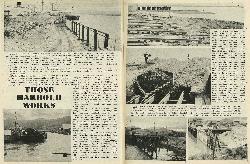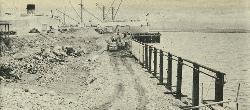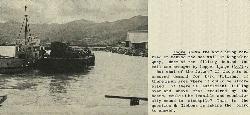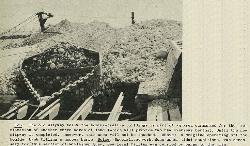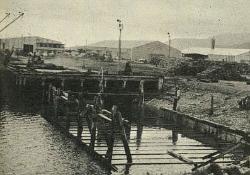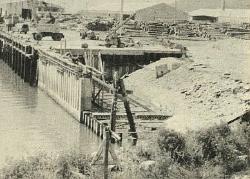22
Those Harbour Works
In our last issue we published a feature on major projects being undertaken by the Nelson Harbour Board, and suggesting that reported remarks by board member Mr Bill Gibbons deserved serious consideration by the board. These related to the stockpiling of hard filling dredged by the Tasman Bay from the harbour entrance and brought from the boulder bank, for use in these works and for sale, and to the more extensive use of private contractors for some of the major projects. As a result of this article we were invited to undertake a more intensive study of the two matters referred to, and this we have done as far as time has permitted.
Our heading on this article in the last issue was: "Mr Gibbons Could be Right". We still feel that he could be right, but we agree that the situation at the port is a little more complex than at first it appeared.
Let's look firstly at the question of stockpiling hard filling. The question that must be faced is: "Is it feasible and economically sound?" In recent years many thousands of tons of hard filling, dredged and from the boulder bank, have been used for filling at wharves built by the board. This has been accomplished by emptying the Tasman Bay and the hopper barge close to where the filling is to be placed, and then scraped, by dragline bucket, into position. If the Tasman Bay is to be used for this work, she must have 20ft of water beneath her. This method was used for McGlashen Quay, and at Kingsford Quay, to sea-level. With the building of the sea wall at Kingsford Quay, it is no longer possible to place the hard filling where it is wanted by this method and so it has been brough in from an outside source by truck and deposited where needed.
The cost of this filling, while it was being used at sea level on Kingsford Quay, has been relatively low, but, we have been informed, if it had to be transported across the harbour, dumped in the sea, recovered and stockpiled and trucked as filling for the higher levels, the cost could well be in excess of the $1.10 being paid for the direct placement of the material being brought from Wakapuaka by truck.
Our pic above shows the work being carried on behind the sea wall at Kingsford Quay. Most of the filling behind the wall was brought by hopper barge (left).
But what of the future? If there is an assured demand for hard filling: if there is an area where it could be stockpiled: if there is sufficient filling over and above that required by the board, would it be feasible and economically sound to stockpile? This is the question Mr Gibbons is asking the board to answer.
23
The letting of contracts for major works is another, matter which poses problems. Again, the amount of contracting to be let is dependent upon the answer to this question: "How urgently are the facilities required?" If the facilities (those offered by the completion of Kingsford Quay, for example) are required urgently, then the letting of contracts for the speedier completion of the work would be justified, no matter what the additional cost to the board. Such costs could be recouped very quickly in wharfage dues. If the facilities are not required quickly, then it is much better and cheaper for the board's staff to do the work. To give some indication of the difference in costs, the new boat slip under construction was cited as an example. The cost of this to the Nelson board will be about $300, 000. A slightly larger slip at Whangarei built under contract cost about $1, 200, 000, so we were told. The Nelson board, does, of course, let many sub-contracts.
The old slipway below the administrative buildings is part of an area earmarked for the reclamation of another three acres of land (which will provide two new overseas berths). Until the new slipway is completed, however, this area will not be touched.
A dragline operating off the boulder bank filling a hopper barge.
Specialised work, done under tidal conditions, was necessary for this section of McGlashen Quay. Sea level filling was carried by barge to the site.


